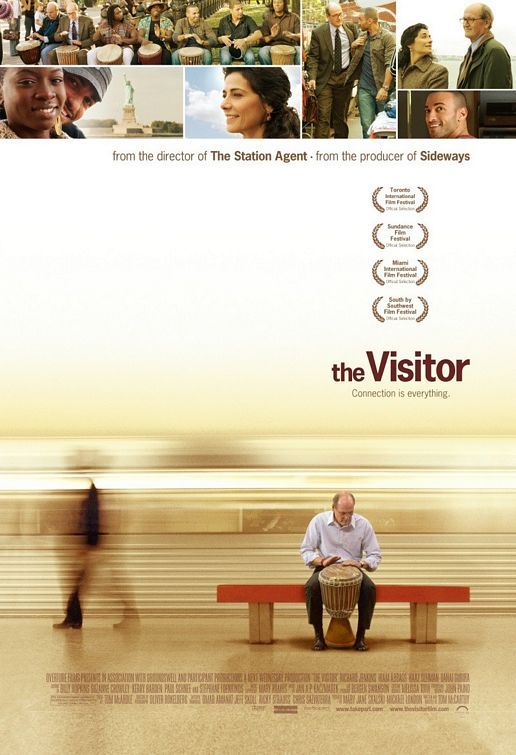
Two weeks ago I was able to attend the SUNY Cortland Human Rights groups showing of the film "The Visitor" on campus. The visitor is written and directed by Thomas McCarthey. Richard Jenkins stars as Walter Vale, a widowed college professor from Connecticut who has become bored with his life. He has been writing a book for years that he has no interest in finishing, and he has taught the same college course, the only course he teaches, for over 20 years. The chair of his department sends him to New York City to attend a conference and give a presentation on a book he was a second author on. He isn't thrilled, especially since he hasn't even read the whole book, but goes anyway.
When he gets to New York he goes to his apartment which he hasn't stayed in for years. While there he finds that an unmarried ethnic couple living there, who think they are renting the apartment from a guy that claims to own it. After packing their things and leaving the apartment, Walter realizes the couple have no where to go. He invites, and insists, that the couple stay with him for a few nights until they can find their own place. Over the next few days Walter develops a bond with Tarek, the guy.
One day while entering a subway station with Walter, Tarek gets stuck in the turnstile and hops over it. He is then arrested by the police for jumping the gate. The problem is that Tarek is an illegal immigrant so he is taken to a detention center. The rest of the film shows how Walter fights for Tarek to be freed.
This film was interesting to me because of the cross-culture references, especially since 9-11. Tarek is Palestinian and from Syria, but still claims that people feel he is a terrorist. Even though he has done nothing wrong, he is still locked up and eventually deported. Its sad that people are treated that way, especially when we preach that America is the land of freedom and a place where anyone can make it. Also the film explores different cultures through Tarek and his girlfriend.

I also enjoyed this film because of the African drumming of Tarek, which he teaches Walter throughout the film. I am a drummer and have studied ethnic drumming, so when Tarek talks about African drumming being in 3s instead of 4s like classical music it made sense to me. Also I loved the line about in order to drum you can not think, just drum.
I would definitely recommend this film to friends and it is no wonder that it was nominated for so many awards.
Total time: 3 hours


